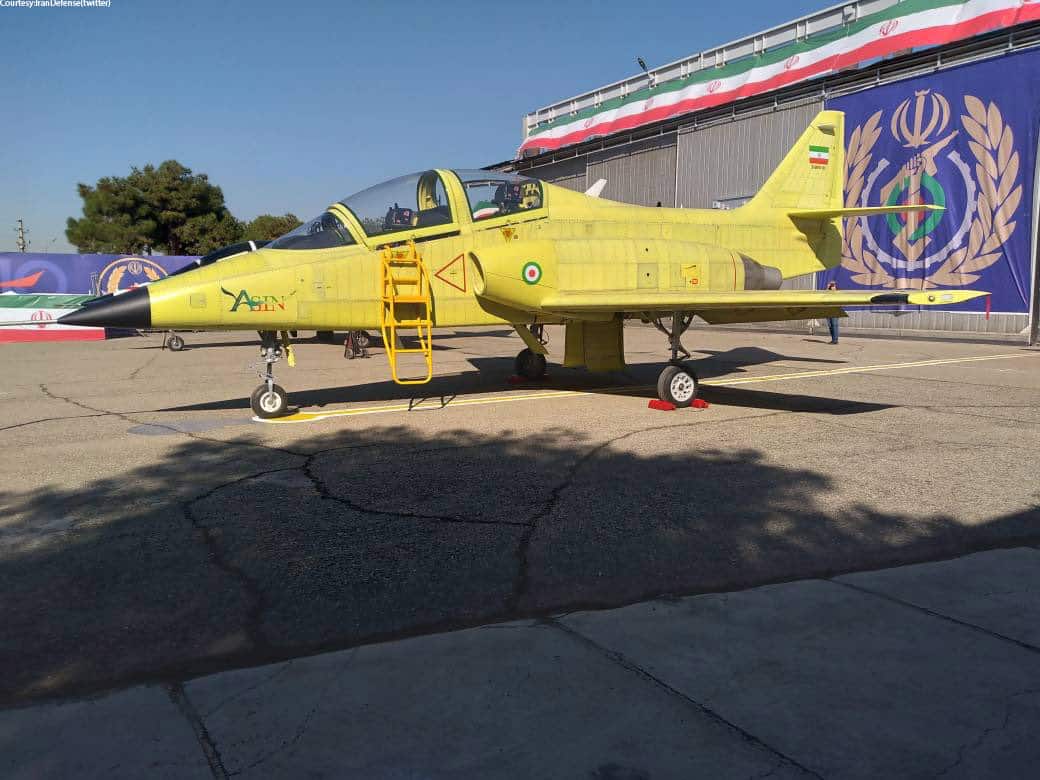Aviation
“The Yasin Jet Trainer: Iran’s Answer to Sanctions and Self-Reliance in Defense”

The completed prototype of Iran’s homegrown trainer jet was shown, bringing the country’s military forces one step closer to self-sufficiency. Iranian Defense Minister Brigadier General Mohammadreza Ashtiani attended the inauguration of the aircraft’s production line as the Islamic Republic of Iran (IRI) Air Force welcomed the second “Yasin” advanced trainer jet.
For the next phase of training its pilots for Su 35 aircraft, Iran unveiled the first Indigenius trainer aircraft. Despite Western sanctions, Iran is actively producing its own aircraft and developing its manufacturing capabilities.
The second 2nd Yasin advanced trainer jet has finally been unveiled, after the first prototype appeared in 2019
A production line has been formed. If there's still plans for a CAS variant, we'll likely see the design for it soon https://t.co/jLiEwUhpCK pic.twitter.com/UTABSYMk1o
— Iran Defense|نیروهای مسلح جمهوری اسلامی ایران (@IranDefense) March 11, 2023
The Yasin is a twin-seater, single-engine aircraft that can be used for pilot training, advanced pilot training, and weapon delivery training. It has a maximum speed of around 1,000 km/h and a range of approximately 900 km.
The Yasin’s development is a significant step for Iran’s defence sector because it demonstrates the nation’s capacity to manufacture cutting-edge military equipment at domestically. Iran has been under international sanctions for many years, which has made it difficult for the country to import advanced military equipment from other countries.
The Yasin is part of a larger effort by Iran to strengthen its military capabilities and reduce its reliance on foreign military equipment. It’s also a symbol of Iran’s technological and scientific progress and its ability to achieve self-sufficiency in various areas, including defense.

Aviation
Boeing, Antonov to Collaborate on Defense Projects

– MOU represents Boeing’s commitment to work with Ukrainian industry
– Includes exploring opportunities for collaborating on in-country support of Unmanned Aerial Systems
A Memorandum of Understanding was signed today by Boeing and Antonov Company to investigate potential collaboration on defense-related projects.
“We’re happy to keep collaborating with the Antonov Company to help Ukraine’s economic development and expansion,” stated Ted Colbert, CEO and president of Boeing Defence, Space, & Security.
Airbus and the Antonov An-225: The Best Partnership:Click here
“This agreement demonstrates our ongoing efforts to find more opportunities to work with Ukrainian industry, which was underscored by our signing of the Ukrainian Defence Industry Compact earlier this year.”
The areas of potential collaboration identified in the agreement consist of training, logistical support and overhaul services for tactical Unmanned Aerial Systems utilized by the Ukrainian Armed Forces, which includes the ScanEagle. In addition, the companies will also explore opportunities for Antonov to provide engineering support to Boeing.
The six largest cargo aircraft ever built in the aviation industry:Click here
“A strong, innovative, and efficient defense industry is key to sustainable economic development and national security, and we are extremely excited to collaborate with Boeing,” said Ievhen Gavrylov, CEO of Antonov Company.
This agreement brings a whole new level of opportunity to implement the latest and most effective solutions – in addition to the possibility of future projects with Boeing in the aerospace and defense industry.”
-

 Travel1 week ago
Travel1 week agoAir India to Expand US Operations with Three New Routes After a Decade
-

 Travel2 weeks ago
Travel2 weeks agoWhy We Should Avoid These Stamps in a Passport
-

 Airlines1 month ago
Airlines1 month agoInvestigations Reveal Fake Chinese Titanium in Boeing and Airbus Jets
-

 Tech4 weeks ago
Tech4 weeks agoChina’s CATL Plans 1,800-Mile Electric Plane Launch by 2027
-

 Airport3 days ago
Airport3 days agoTop 10 Largest Airports in the World by Size
-

 Aerospace4 weeks ago
Aerospace4 weeks agoChina’s Fighter Jets Turn Wings into Autonomous Drones
-

 Airlines4 days ago
Airlines4 days agoAir India Rolls Out A350s for Delhi-New York JFK and Newark Routes
-

 Defence3 weeks ago
Defence3 weeks agoBoeing Enhances Chinook with New Engines and Block II Upgrades at $96 Million







